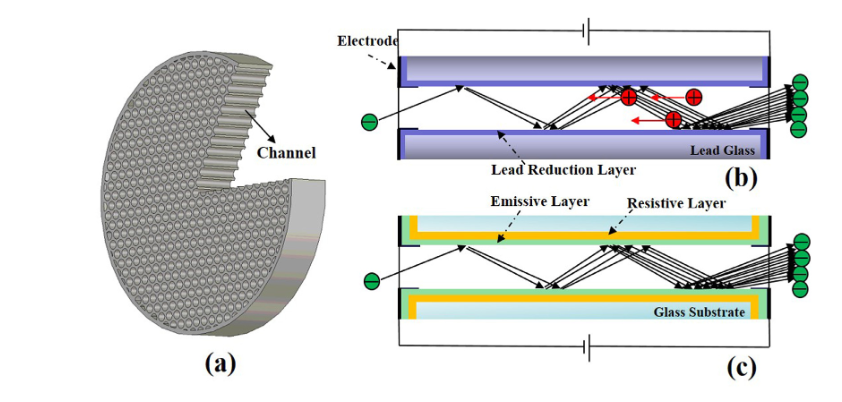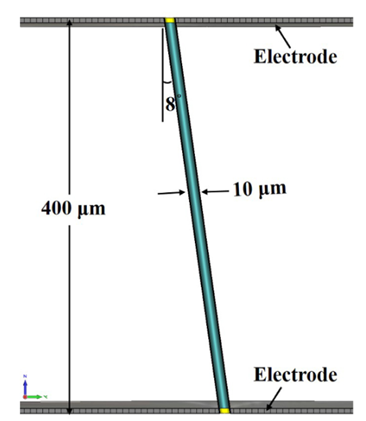Due to its unique advantages such as high sensitivity to single photon, fast time response, high temporal–spatial resolution and magnetic field tolerance, the microchannel plate-photomultiplier tube (MCP-PMT), a kind of compact high-sensitive photo device consisting of photocathode, MCPs, anode and tube shell, has attracted much attention in the field of modern high-energy physics detection.
However, the damage caused by the ions feedback in the channel to the photocathode limits the lifetime of the MCP-PMT.
In order to solve the limited lifetime problem of MCP-PMT, the atomic layer deposition (ALD) technique is used to deposit the novel separate resistive and emissive layers onto the inner surface of the channel that uses borosilicate glass instead of the lead glass as the microcapillary substrate material.
But up to now, the systematic simulations and experimental studies for various emissive materials are still sparse. To what extent the secondary electron emission (SEE) yield properties of the emissive materials influence the behavior of the ALD-coated MCP is still an open question. Thus, fully studying how SEE yield properties affect the behavior of ALD-coated MCP is significant to make predictions of MCP performance and help for choosing the appropriate emissive materials for different application requirements.

Schematic structure and principle of the MCP(Image by XIOPM)
Now a research team led by Prof. Dr. Tian Jinshou from Xi'an Institute of Optics and Precision Mechanics (XIOPM) of the Chinese Academy of Sciences (CAS) successfully accesses the dependences of the gain and timing performance on the SEE yield properties by using the Monte Carlo and particle-in-cell methods in computer simulation technique (CST). The results were published in Nuclear Inst. and Methods in Physics Research.
In their work, the 3D model of the MCP single channel was built with the aid of the CST Particle Studio.

Cross section of the 3D model of the MCP single channel(Image by XIOPM)
To investigate the situation about three important secondary electron emissions respectively, (the backscattered, rediffused and true SEEs) researchers first let all settings same as the conventional MCP and then only change the key parameters and leave the other parameters unchanged. And thereby derive the main characteristics of the ALD-coated MCP, gain and timing performance, dependency, etc.
The simulation results indicate the opportunities for improving the gain of the ALD-coated MCP by improving the SEE yields corresponding to the incident energies of 0eV–100eV.
The backscattered and rediffused electrons are found to have strong effects on the gain and timing performance of the MCP. Although the higher the SEE yield the higher the MCP gain, the extremely high SEE yield will make the MCP saturated prematurely and degrade the time resolution.
The result of this work will give a lot of inspiration to the study and selection of material used to make the emissive layer and will provide a reference for developing the next generation of the ALD-coated MCP-PMT.
Download: